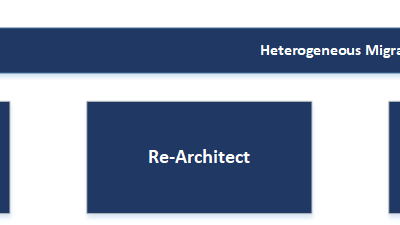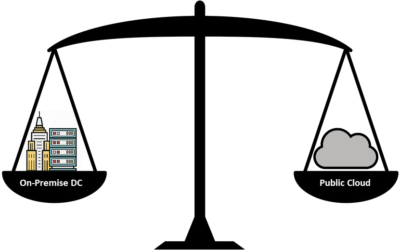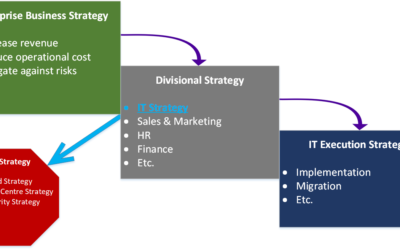The appeal of cloud computing has lured organisations into a new era of digital transformation. Its promises of agility, scalability, and cost-efficiency are indeed alluring. Yet, beneath this shinny surface, lurks a complex ecosystem of risks and responsibilities that many technology leaders struggle to navigate.
As cloud adoption accelerates, the gap between utilisation and governance widens greatly. This gap is where risks proliferate, costs spiral, and compliance nightmares take root. The need for a strategic approach to cloud governance has never been more pressing.
But what exactly does effective cloud governance mean? And how can organisations foster a culture of informed risk acceptance without stifling innovation?
This will be the focus of today’s post.
Let’s get to it!
The Current State of Cloud Governance
Imagine a cloud gold rush, where departments stake their claims and reach for digital nuggets without a sheriff in sight. Without governance, the cloud becomes that free-for-all lawless Wild West, where cost overruns, security breaches, and non-compliance run rampant, leaving organisations vulnerable and restraining their ability to thrive in the digital frontier.
The race to the cloud has left many organisations in a state of governance limbo. They find themselves straddling two worlds: the familiar terrain of on-premises control and the wild frontier of cloud services. This situation presents unique challenges:
- Shadow IT runs rampant, with business units spinning up cloud resources at will, often bypassing established IT protocols.
- Cost management becomes a momentous task as cloud spend sprawls across multiple providers and accounts.
- Security teams grapple with an expanded attack surface, struggling to maintain visibility and control.
- Compliance officers lose sleep over data residency issues and regulatory requirements in a borderless cloud environment.
Most organisations’ governance maturity lags significantly behind their cloud adoption curve. This misalignment is a ticking time bomb of risk and inefficiency.
To tame the cloud chaos, technology leaders must architect a governance framework that’s both robust and flexible. Here’s how:
Developing a Cloud Strategy
First things first: you need a north star. Your cloud strategy should be a living document that aligns cloud initiatives with overarching business objectives. It’s not just about technology, it’s about value creation and risk management.
Key components of a solid cloud strategy include:
- Clear definition of allowed cloud services and use cases
- Data classification guidelines and their implications for cloud usage
- Architectural standards for cloud deployments
- Key performance indicators (KPIs) for measuring cloud success
Remember, a strategy gathering dust on a shelf is worse than no strategy at all. Make it actionable, make it relevant, and most importantly, make sure it evolves as your cloud journey progresses.
Establishing a Cloud Centre of Excellence (CCoE)
Think of the CCoE as your cloud governance nerve centre. It’s not just another bureaucratic layer, but it’s a cross-functional team of cloud champions who:
- Drive cloud adoption best practices across the organization
- Develop and maintain cloud policies and standards
- Provide guidance on cloud architecture and security
- Foster innovation while ensuring compliance
The CCoE should be a melting pot of skills: cloud architects, security experts, compliance officers, and business representatives. This diversity ensures a holistic approach to governance that balances innovation with risk management.
Creating a Cloud Service Catalogue
In the age of self-service IT, a well structured cloud service catalogue is your governance secret weapon. It’s the difference between a free-for-all cloud buffet and a carefully planned à la carte menu of services.
Your catalogue should:
- List approved cloud services with clear usage guidelines
- Provide standardised templates for common cloud deployments
- Include pricing information to promote cost awareness
- Integrate with your IT service management (ITSM) processes for seamless provisioning
By channelling cloud consumption through a governed catalogue, you gain visibility, control costs, and ensure compliance without sacrificing agility.
Risk Acceptance in the Cloud
Navigating cloud risk acceptance is similar to charting an ever-shifting technological terrain. The challenges demand a structured approach, advanced tools, and expert guidance to effectively manage cloud complexities. Like ships needing skilled captains, maps, and compasses, organizations require robust frameworks and skilled professionals to assess and mitigate cloud risks while maximising adoption benefits.
Traditional IT risk models often crumble in the face of cloud complexity. It’s time for a transformative shift in how we think about and accept risk in the cloud era.
Understanding Cloud Risk Ownership
In the cloud, risk is a shared responsibility. But shared doesn’t mean equal, and it certainly doesn’t mean clear. Technology leaders must lead efforts to clarify the risk ownership:
- Clearly delineate responsibilities between the cloud provider and your organisation
- Identify key stakeholders for different types of cloud risks (e.g., data owners for data privacy risks)
- Establish a RACI matrix for cloud risk management
The cloud provider secures the cloud, but you’re responsible for securing what’s in the cloud. This nuance is critical and often misunderstood.
Implementing a Risk Acceptance Process
Gone are the days when IT could unilaterally accept or reject technology risks. In the cloud era, risk acceptance must be a collaborative process involving business units, IT, security, and compliance teams.
Key steps in a robust risk acceptance process include:
- Develop a cloud-specific risk assessment framework
- Create standardised risk acceptance forms that capture key information
- Establish approval workflows based on risk levels
- Implement a system for tracking and reviewing accepted risks over time
The goal isn’t to eliminate all risks, that’s impossible. Instead, aim for informed risk acceptance where business value is weighed against potential downsides.
Educating Business Units on Cloud Risks
Knowledge is power, especially when it comes to cloud risks. Launch a comprehensive education program that:
- Explains cloud-specific risks in business terms
- Provides real-world examples of cloud security incidents and their impacts
- Offers practical guidance on risk mitigation strategies
- Empowers business units to make informed decisions about cloud usage
An educated stakeholder is your best ally in governance and risk management.
Best Practices for Cloud Governance and Risk Acceptance
Implementing governance is one thing, sustaining it is another beast entirely. Here are some best practices to keep your governance engine running:
Continuous Monitoring and Assessment
The cloud never sleeps, and neither should your governance efforts. Implement tools and processes for:
- Real-time visibility into cloud resource usage and configurations
- Automated compliance checks against internal policies and external regulations
- Regular risk reassessments as your cloud footprint evolves
Consider leveraging cloud-native security tools and third-party Cloud Security Posture Management (CSPM) solutions to automate these processes.
Automating Governance Controls
Manual governance is a losing battle in the cloud. Embrace automation to enforce policies consistently and at scale:
- Implement infrastructure-as-code (IaC) templates with built-in governance controls
- Use policy-as-code frameworks like Open Policy Agent (OPA) for flexible, programmatic policy enforcement
- Leverage cloud provider native tools (e.g., AWS Control Tower, Azure Policy) for baseline governance
The goal is to make compliance the path of least resistance for your cloud users.
Fostering a Culture of Responsible Cloud Use
Governance isn’t just about policies and tools; it’s about people. Cultivate a culture where responsible cloud use is the norm:
- Gamify compliance with leader boards and rewards for teams that adhere to governance policies
- Share success stories of how good governance led to better outcomes
- Make governance metrics part of performance reviews for cloud-using teams
Overcoming Common Challenges
The path to effective cloud governance is littered with obstacles. Here are some common hurdles and strategies to overcome them:
- Resistance to governance: Position governance as an enabler, not a roadblock. Show how it can accelerate safe innovation.
- Balancing agility with control: Use automated guardrails instead of manual gatekeepers. This maintains speed while ensuring compliance.
- Multi-cloud complexity: Develop cloud-agnostic governance principles, then tailor the implementation to each provider’s unique features.
Future Trends in Cloud Governance
As the cloud continues to evolve, so too must our approach to governance. Keep an eye on these emerging trends:
- AI-driven governance: Machine learning algorithms that can predict governance violations before they occur
- Quantum-safe cryptography: Preparing governance frameworks for the post-quantum cryptography era
- Decentralized identity management: Leveraging blockchain for more secure and portable cloud identities
Conclusion
Cloud governance and risk acceptance are not one-time projects but ongoing journeys. They require continuous attention, adaptation, and commitment from all levels of the organisation. Technology leaders must:
- Champion a culture of responsible cloud use from the top down
- Invest in automation to scale governance efforts effectively
- Foster cross-functional collaboration in cloud risk management
- Stay ahead of emerging cloud technologies and their governance implications
In the cloud era, good governance isn’t just about avoiding pitfalls, it’s about enabling your organisation to maximise cloud benefits safely and securely.
I hope you found the article informative. Thank you for reading.
Regards,
Nick






Mike A
September 27, 2024This is a helpful reminder that cloud governance is about more than just security. We need to consider costs, compliance, and how cloud fits into our overall business strategy.
TJ
September 28, 2024Great overview of cloud governance!
Pane
September 30, 2024While this article provides a good overview of cloud governance, it seems to focus primarily on large enterprises. How can smaller businesses with limited resources effectively implement these recommendations without being overwhelmed?